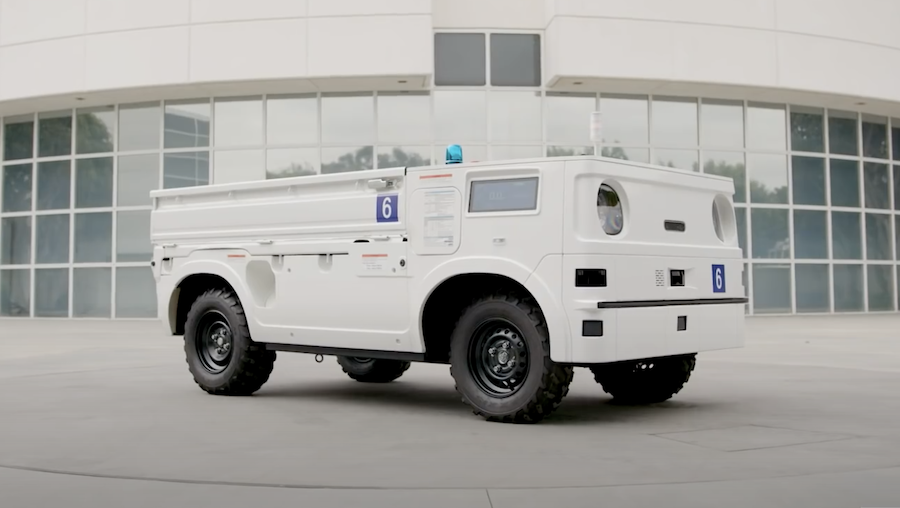
Honda’s prototype autonomous work vehicles successfully operated in groups to assist during the construction of a solar power plant, the company announced in November.
First unveiled in 2018, Honda’s fully electric Autonomous Work Vehicle (AWV) uses radar and LiDAR for obstacle detection, GPS for location and stereoscopic 3D cameras for remote monitoring. The vehicle can also be operated by remote control.
The recent month-long field test of the Honda AWV was the first to deploy multiple units working collaboratively to support construction. The second-generation prototype carried out a range of tasks at a large-scale solar energy construction project in New Mexico, including towing activities and transporting construction materials, water, and other supplies to pre-set destinations within the work site.
Honda selected a site where the support structures for the solar panels were laid out in a grid pattern at regular intervals. This was ideal for tests of the Honda AWV’s ability to stop at precise points along a pre-set route.
Honda engineers trained personnel at construction firm Black & Veatch on the operation and safety protocols of the 9.5-foot-long, nearly 1,600-lbs. vehicles to effectively use the machines in the field. Honda also produced a high-definition map of the 1,000-acre site that allowed Black & Veatch operators to precisely set start and stop points for multiple Honda AWVs using a cloud-based app interface that runs on tablets and PCs.
The vehicles successfully delivered materials and supplies along a calculated route. They also proved capable of stopping within centimeters of the pre-set points.
The Honda AWV battery system could operate up to eight hours in a high-temperature environment. The vehicle could each carry payloads of nearly 900 pounds and tow a trailer carrying more than 1,600 pounds.
“With our test partner, Black & Veatch, Honda was able to demonstrate the performance of our rugged all-electric Autonomous Work Vehicle prototype in a large-scale construction environment,” Kenton Williams, U.S. project lead for the Honda AWV, said in a statement. “We believe the Honda AWV has the potential to bring greater efficiencies, higher levels of safety and better environmental performance to the construction industry, and to other industries seeking an autonomous off-road solution.”
Honda continues to field test the machine. It anticipates further improvements to its performance and design specifications.

